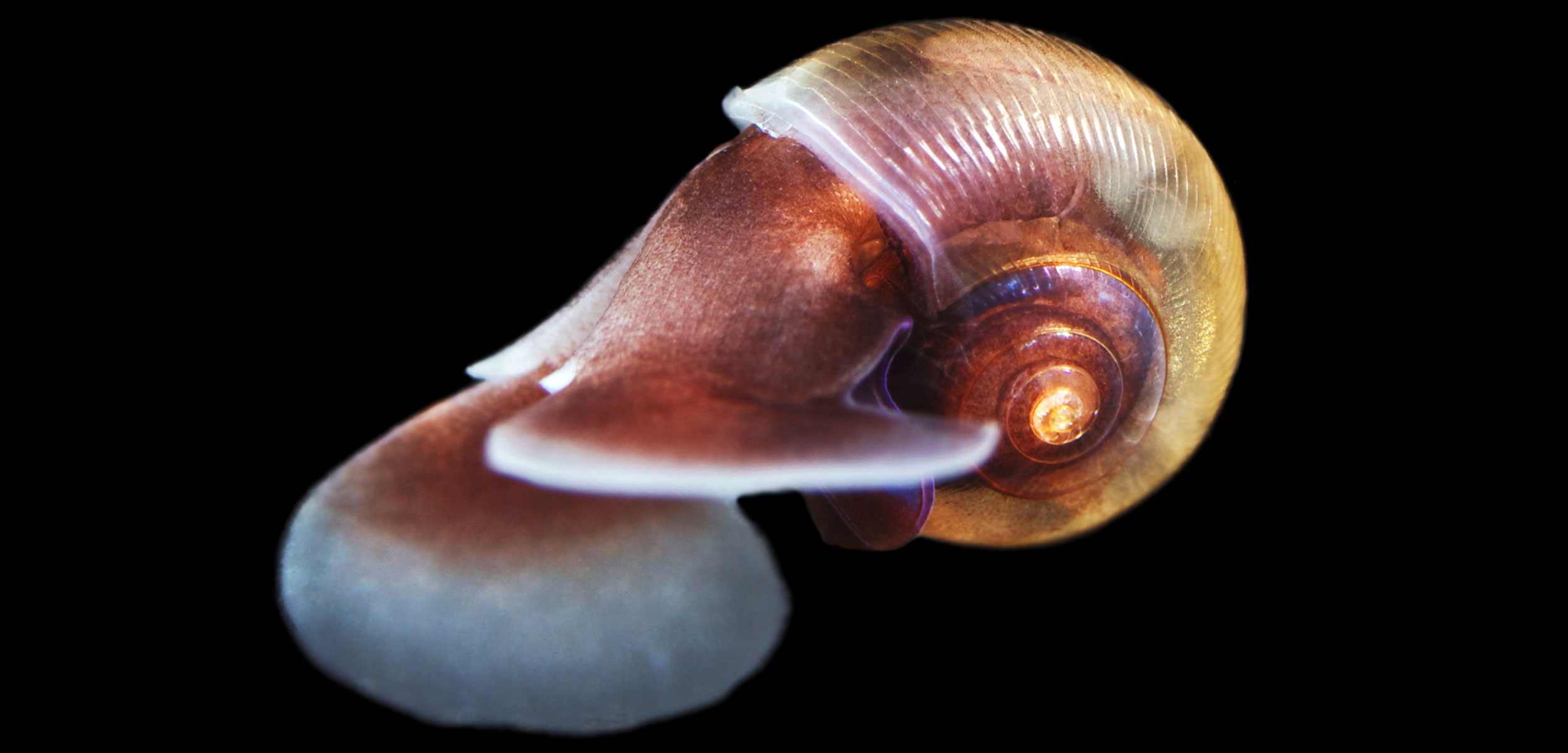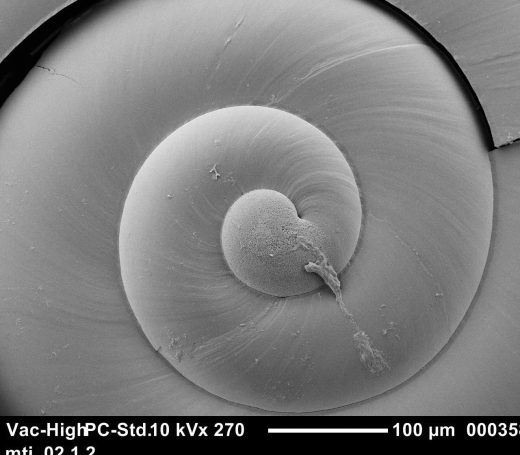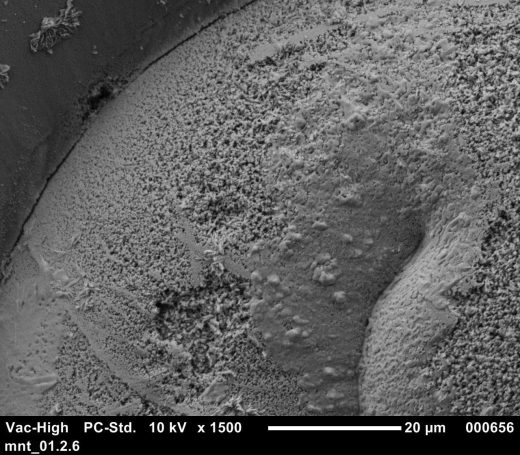The Shells of Wild Sea Butterflies Are Already Dissolving
This long-predicted outcome of ocean acidification experiments has started showing up in the wild.
Article body copy
The canaries foretelling ocean acidification fly through the water on winglike feet, lofting their tiny curl of a shell behind them. And those shells are dissolving.
For more than a decade, laboratory studies and models have warned of the vulnerability of pteropods—tiny sea snails also known as sea butterflies—to ocean acidification. Now those predictions have escaped the lab. From the Gulf of Alaska and the Bering Sea to the Beaufort Sea, scientists are finding pteropods with dissolved shells. Nina Bednarsek, a biogeochemist with the Southern California Coastal Water Research Project, recently presented some of these findings at the Alaska Marine Science Symposium.
Bednarsek’s latest field observations show dissolving pteropod shells from a yawning hotspot of corrosive water that encompasses their spawning grounds in the western Gulf of Alaska. In the Canadian Beaufort Sea, the picture is even more troubling. There, in fjords where ocean acidification is exacerbated by glacial meltwater, up to 70 percent of the animals have corroded shells.
Since the Industrial Revolution, 40 percent of the carbon dioxide released from the burning of fossil fuels has been absorbed by the oceans. The excess carbon dioxide makes the water more acidic, causing calcium carbonate (the compound used by many organisms to build shells or other structures) to dissolve more easily. Since pteropods build thin shells from the most soluble form of calcium carbonate, they’ve long been studied in ocean acidification research. In laboratory experiments, researchers bubble carbon dioxide into vials containing the tiny creatures. They track how the shells degrade, and even crumble, in the most extreme treatments.
Hundreds of meters down, the whole ocean is corrosive to these delicate sea snails. The region of pteropod-friendly water near the surface is shallower in cold water, which can absorb more carbon dioxide, and in places like the northern Pacific Ocean, where circulation brings naturally more acidic water closer to the surface. Seasonal patterns of currents and upwelling have always brought some of this water within the range of pteropods, but the rapid increase in anthropogenic carbon dioxide is expanding the sea snails’ exposure to harmful conditions.
Scanning electron microscope examinations of pteropod shells show how the calcium carbonate dissolves in acidified water. In the first image, a healthy shell is smooth and full, while in the second, a closer zoom on a shell that had been exposed to acidified water shows it to be rough and pockmarked. Images by Nina Bednarsek
Modeling work by University of Alaska Fairbanks oceanographer Claudine Hauri shows how these corrosive hotspots in high-latitude oceans have been growing in recent decades. “In 1980, in the Gulf of Alaska, there were already some regions exposed, but when you look at a more recent year, like 2013, these areas [of corrosive water] are much broader, and much more widespread throughout the year.”
Bednarsek’s field research shows that the severity of shell dissolution tracks closely with regions of acidified water. These new results from northern oceans build on similar observations made earlier in the Southern Ocean and along the US west coast.
The pteropod Bednarsek studies, Limacina helicina, is more than just the proverbial canary in the coal mine. One of only two species of pteropod to live in high-latitude waters, this particular species is abundant and critical to Arctic food webs, often dominating zooplankton communities and feeding everything from pink salmon to whales.
Pteropods can patch their damaged shells, but at a cost, Bednarsek explains. “The pteropods are a bit more physiologically compromised—not really feeling very well.” More acidic water triggers stress responses in the pteropods, as well as sucking energy to rebuild their shells. Stressed out pteropods accumulate free radicals, which decompose their lipids and fatty acids. And since these lipids and fatty acids are essential nutrients for juvenile fish, corroded pteropods make a poor meal, compromising the health of other animals in the food chain.
High-latitude pteropods evolved in an environment where acidity shifts with the seasons. “Species exposed to naturally high variability might be more adaptable,” Hauri points out. “But as acidification increases, the extremes will be more than they have ever seen before.”
“Fish depend on the pteropods, and people are entirely dependent on these fish for subsistence,” Bednarsek adds.
Regardless of future carbon dioxide emissions, the oceans will continue to absorb what we’ve already pumped out, becoming more and more corrosive. As impacts to pteropods intensify, Bednarsek sees an increasing need to study other shell-building animals, and the links between these shell builders and the rest of the food web. The impacts of ocean acidification are already here. It’s time to look beyond the canaries.



